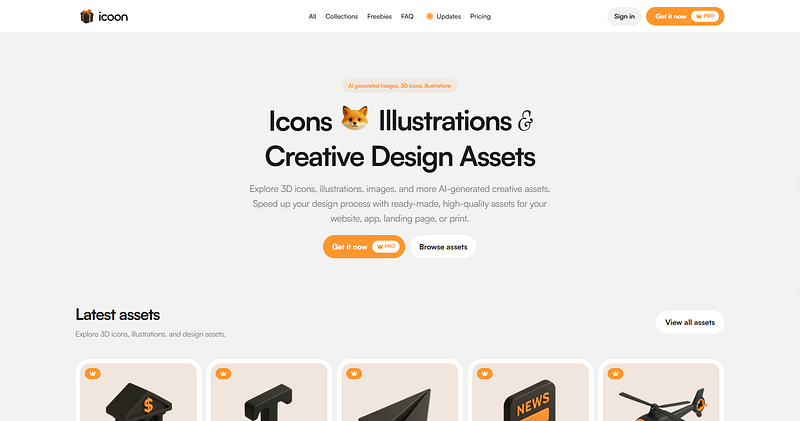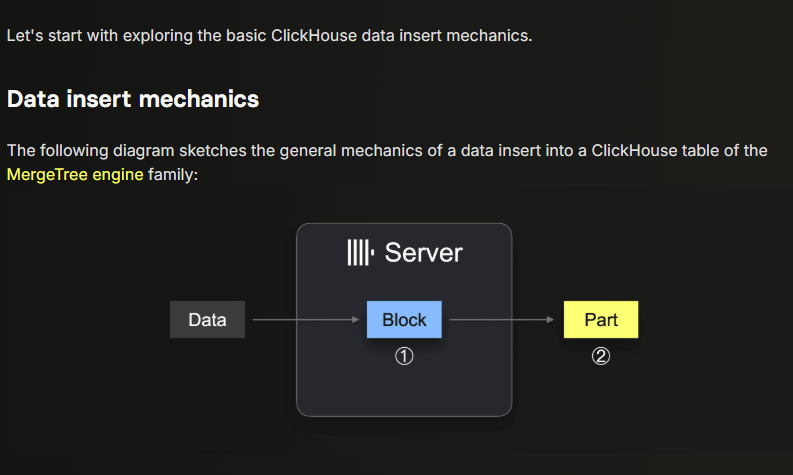Daily Website Revenue Model Analysis: icoon.co
Date: April 29, 2025
Website: https://www.icoon.co/
Website Overview
icoon.co is a platform offering 3D icons, illustrations, and AI-generated design assets, targeting designers, developers, and users seeking high-quality visual content. It emphasizes “pixel-perfect quality” and “intelligently designed visuals,” providing both free and premium high-resolution PNG icons (2048x2048, transparent background) with features like “one-click access to the full library” and “unlimited downloads.” The platform covers various styles (e.g., dark chrome, Ghibli, blue metal) and updates regularly to maintain freshness.
Revenue Model Analysis

1. Primary Revenue Streams
Based on the website’s features and public information, icoon.co’s revenue model likely includes the following:
a. Subscription Model
- Description: icoon.co offers “one-click access to the full library” and “unlimited downloads,” suggesting a core revenue stream from subscription plans (monthly or annual). Users pay for access to premium design assets, such as AI-generated illustrations or exclusive icon collections.
- Evidence: Search results mention “premium design assets” and “unlimited downloads,” typical features of a subscription model, similar to Canva or Flaticon’s paid plans.
- Implementation:
- Free users access limited free icons, driving traffic and potential conversions (Freemium model).
- Paid subscribers unlock the full asset library, possibly paying monthly (e.g., $10-$20) or annually for higher-resolution files or exclusive content.
- Likely integrated with payment gateways like Stripe or PayPal for subscription processing.
- Advantages:
- Provides stable, predictable recurring revenue (Monthly Recurring Revenue, MRR).
- Encourages long-term user retention, increasing customer lifetime value (LTV).
- Disadvantages:
- Requires continuous high-quality content updates to sustain renewals.
- High pricing may lead to churn, especially in a competitive design asset market.
b. One-Time Purchases (Transactional Model)
- Description: In addition to subscriptions, icoon.co may allow users to purchase individual icon sets or specific design assets (e.g., $5-$15 per set) on a pay-per-use basis.
- Evidence: Not explicitly mentioned in search results, but the reference to “premium design assets” suggests possible one-time purchase options, similar to Icons8’s on-demand model.
- Implementation:
- Users can buy specific collections without subscribing, catering to those unwilling to commit long-term.
- Likely facilitated through an in-site cart or direct download links.
- Advantages:
- Attracts users unwilling to subscribe, broadening the customer base.
- Offers flexible pricing for budget-conscious users.
- Disadvantages:
- Revenue is less predictable, relying on one-off purchase volume.
- May undermine the appeal of subscriptions.
c. Advertising or Sponsorship (Potential)
- Description: While not explicitly mentioned, icoon.co could generate additional income by displaying design-related ads (e.g., for design software or tools) or partnering with brands for sponsored content.
- Evidence: Many free resource platforms (e.g., Unsplash) use ads or sponsorships to supplement income. icoon.co’s free icons likely attract significant traffic, creating advertising opportunities.
- Implementation:
- Display Google AdSense banner ads or native ads on the site.
- Partner with design tool brands (e.g., Figma, Adobe) to promote products for sponsorship fees.
- Advantages:
- Monetizes free user traffic for passive income.
- No direct cost to users, lowering the entry barrier.
- Disadvantages:
- Excessive ads may degrade user experience and site professionalism.
- Relies on high traffic, making revenue inconsistent.
d. Donation Model (Secondary)
- Description: icoon.co might encourage users to donate for free resources, similar to Wikipedia’s model.
- Evidence: Not explicitly mentioned, but many free resource platforms include “Buy Me a Coffee” or PayPal donation links.
- Implementation:
- Add a donation button on the site to encourage users to support operations.
- Possibly integrated with platforms like Patreon or Ko-fi.
- Advantages:
- Fosters community support and attracts loyal users.
- No mandatory fees, suitable for smaller user bases.
- Disadvantages:
- Revenue is unreliable, depending on voluntary contributions.
- Contributes minimally to overall income.
2. Revenue Model Combination
icoon.co likely employs a Freemium + Subscription + One-Time Purchase hybrid model:
- Freemium: Free icons drive traffic and conversions to paid plans.
- Subscription: Primary revenue source, offering full library access.
- One-Time Purchases: Supplementary income for non-subscribing users.
- Advertising/Sponsorship or Donations: Secondary streams leveraging traffic or community support.
This combination is common in design asset platforms (e.g., Flaticon, Icons8), balancing user acquisition with revenue growth.
Pros and Cons Analysis
Pros
- Diversified Revenue Streams:
- Subscriptions and one-time purchases cater to varied user needs, while ads/sponsorships monetize free traffic, reducing reliance on a single model.
- Freemium Appeal:
- Free icons lower the entry barrier, attracting designers and developers, increasing paid conversion potential.
- High-Value Offerings:
- High-resolution 3D icons and AI-generated assets are professional-grade, justifying premium pricing (e.g., subscriptions or purchases).
- Recurring Revenue:
- Subscriptions ensure steady cash flow, supporting content updates and platform maintenance.
Cons
- Market Competition:
- The design asset market is crowded (e.g., Flaticon, Freepik, Icons8), requiring unique content or competitive pricing to stand out.
- User Retention Challenges:
- Subscriptions demand continuous new assets to prevent cancellations.
- Free Resource Limitations:
- Low-quality free content may fail to convert users to paid plans.
- Technical Costs:
- High-resolution asset storage and delivery require robust servers and CDNs, increasing operational costs.
Q&A: Is icoon.co’s Revenue Model Effective?
icoon.co’s revenue model (Freemium + Subscription + One-Time Purchases) is proven and effective in the design asset industry. Its key strengths include:
- Free Resources Drive Traffic: Attracts users, boosting brand visibility and paid conversions.
- Subscriptions Ensure Stability: Regular content updates (e.g., Ghibli-style icons, AI-generated illustrations) sustain retention.
- Flexible Purchase Options: One-time purchases cater to short-term users, expanding market reach.
However, success hinges on:
- Content Differentiation: Offering unique design styles or high-quality AI-generated assets to compete.
- User Experience Optimization: Fast loading, robust search/filtering, and clear pricing to boost conversions.
- Cost Management: Balancing free content, technical costs (e.g., CDN, storage), and content creation expenses.
Improvement Suggestions
- Enhance Freemium Value:
- Offer more high-quality free icons or time-limited premium asset trials to drive conversions.
- Dynamic Pricing:
- Introduce tiered subscriptions (e.g., Basic at $5/month, Pro at $15/month) to cater to different budgets.
- Community Features:
- Add user uploads or commenting to build a community, increasing engagement.
- Partnerships:
- Integrate with design tools (e.g., Figma, Sketch) for plugins or direct imports, boosting exposure and revenue.
Conclusion
icoon.co’s revenue model leverages Freemium, subscriptions, and one-time purchases to capitalize on the demand for design assets. With high-quality 3D icons and AI-generated content, it has strong potential to thrive in a competitive market. Continuous innovation, user experience optimization, and cost management will be critical for long-term success. Stay tuned for tomorrow’s analysis of another website’s revenue model!
Note: This analysis is based on public information and industry practices, without access to icoon.co’s internal data. For deeper insights, please provide specific page or feature details.




Member discussion